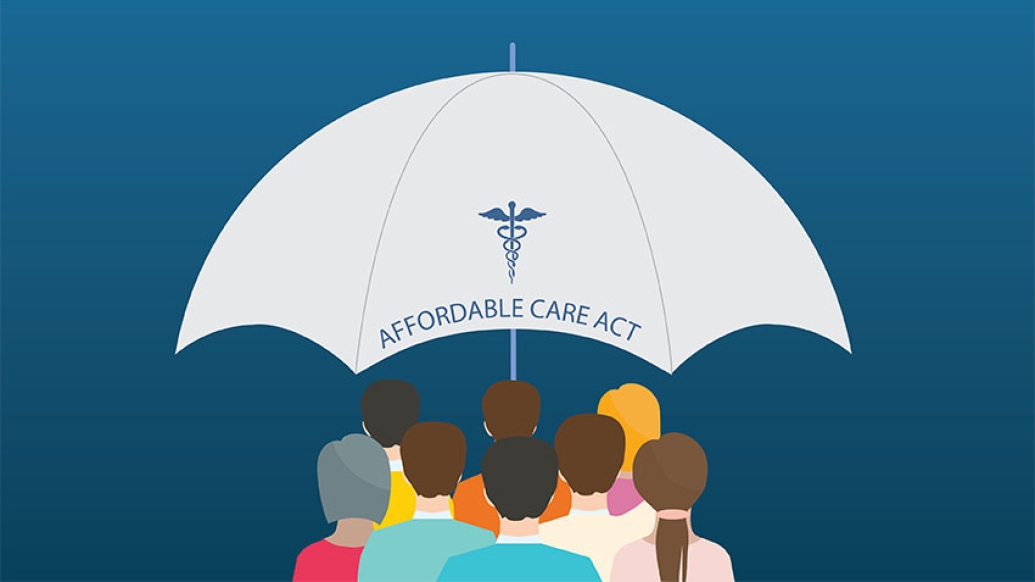U-M researchers show more adults with diabetes covered after ACA provisions for pre-existing conditions and older adults began.
10:48 AM
Author |

A pair of requirements deep in the Affordable Care Act had a sizable effect on the ability of people with diabetes to get health insurance, a new study suggests.
Before the requirements took effect in 2014, the percentage of people with private health insurance who had diabetes had declined, the study shows.
But it began to increase again in the first two years after the ACA required insurers to accept people with pre-existing conditions, and limited their ability to charge higher rates to older people, the study finds. Those requirements lie at the heart of a current national court case.
A team from the University of Michigan reports its findings in the American Journal of Public Health.
The rise from 2014 to 2016 in the percentage of people with private health insurance coverage who had diabetes was sharpest in people in their 50s. For those with Type 1 diabetes, the increase was 20 percent; for people with Type 2 diabetes, it was 15 percent. People in their 40s also saw a rise, of 10 percent for those with Type 1 diabetes and 3 percent for those with Type 2 diabetes.
LISTEN UP: Add the new Michigan Medicine News Break to your Alexa-enabled device, or subscribe to our daily audio updates on iTunes, Google Play and Stitcher.
U-M researchers Mary A. M. Rogers, Ph.D. and colleagues performed the study using insurance data from 2005 to 2016 from a major private insurance company.
"From the point of view of health insurance companies, people with diabetes tend to be expensive to cover, especially as they become older and develop more complications," says Rogers, a research associate professor of internal medicine at the U-M Medical School. "These findings suggest that the Affordable Care Act helped people with diabetes obtain health insurance, especially those working-age adults in their 40s and 50s."
Change in policy, change in coverage
Before 2014, diabetes was considered a pre-existing condition and health insurers could deny insurance coverage to people with either form of the disease. The new research shows the decline in coverage of people with diabetes was especially sharp during the first years of the Great Recession, when many people lost jobs that may have included health insurance coverage.
Rogers points to data from a 2014 Health Care Cost Institute report, which showed that people with diabetes have annual medical expenses about $10,000 higher than others.
For people with chronic health conditions such as diabetes, having insurance coverage can mean the difference between being able to afford crucial medications such as insulin, or getting sick and requiring emergency care,Renuka Tipirneni, M.D., M.Sc.
The senior author of the new paper, assistant professor of internal medicine Renuka Tipirneni, M.D., M.Sc., notes that before the pre-existing condition clause took effect in 2014, insurance companies could set higher monthly rates if they agreed to cover people with diabetes. They could also charge far more to people in their 40s and 50s; the ACA limited those rates to no more than three times what the plans charge a younger person.
"For people with chronic health conditions such as diabetes, having insurance coverage can mean the difference between being able to afford crucial medications such as insulin, or getting sick and requiring emergency care," says Tipirneni. "As a physician, I know how important it is for patients with diabetes and other chronic health conditions to be able to take their medications and get regular check-ups -- services made possible by affordable health insurance coverage."
MORE FROM MICHIGAN: Sign up for our weekly newsletter
The new study shows that people with complications of diabetes were more likely to obtain health insurance after the pre-existing condition clause took effect. One-third of people with diabetic complications, such as damage to their nerves, eyes or kidneys, obtained coverage after 2014, compared with about a quarter of those who were enrolled before 2014.
Court case pending
The ACA requirements regarding pre-existing conditions and limits on rate differences for people of different ages are among the issues being contested in a national court case. In 2018, the U.S. Department of Justice filed a brief stating that it would no longer enforce the ACA clauses known as guaranteed issue and community rating.
The guaranteed issue clause mandates that insurers offer coverage to people with pre-existing conditions, while the community rating requires insurance premiums to be affordable with adjustments only for age, tobacco use and geographic area.
The lawsuit over this matter, and over the constitutionality of the entire Affordable Care Act, is currently working its way through the courts. Called Texas v. United States, it is expected to reach the U.S. Supreme Court.
The study is based on nationwide data from 75 million people covered through a large insurer (the Clinformatics Data Mart Database) purchased by the U-M Institute for Healthcare Policy and Innovation, of which the authors are members.
Tipirneni cares for people with diabetes in her general medicine clinic at Michigan Medicine, U-M's academic medical center, as does co-author Catherine Kim, M.D., M.P.H. Co-author Joyce Lee, M.D., M.P.H. specializes in caring for people with Type 1 diabetes. IHPI senior statistician Tanima Basu, M.A., M.S., co-authored the report.
The study was funded by the National Institutes of Health (TR000433) and by the Jaeb Center for Health Research Foundation (T1D Exchange).
Reference: American Journal of Public Health, DOI 10.2105/AJPH.2018.304933, https://ajph.aphapublications.org/doi/full/10.2105/AJPH.2018.304933

Explore a variety of healthcare news & stories by visiting the Health Lab home page for more articles.

Department of Communication at Michigan Medicine
Want top health & research news weekly? Sign up for Health Lab’s newsletters today!





